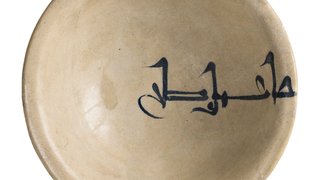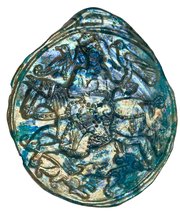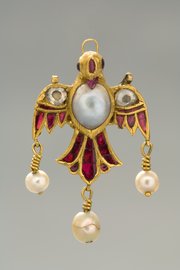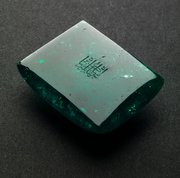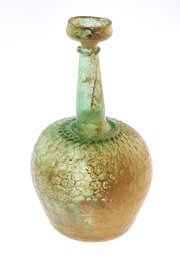
Bowl
Museum of Islamic Art
- Title:
- Bowl
- Production place:
- Basra
- Date:
- 800 - 899
- Period:
- Abbasid
- Title:
- Bowl
- Production place:
- Basra
- Date:
- 800 - 899
- Period:
- Abbasid
- Material:
- Earthenware, Tin glaze, Pigment
- Technique:
- Overglaze painting, Glazing
- Dimensions:
- 7.5
- Diameter:
- 21
With the founding of the Abbasid dynasty in the 2nd century AH/8th century CE, trade between the Islamic lands and Tang China became a significant economic factor. Abbasid Iraq exported mainly agricultural products, in particular date syrup, an ingredient highly praised in Chinese pharmacopoeia for its special healing properties. Imports included Chinese porcelain, which was one of the goods that frequently found its way across the Indian Ocean into Iraq. Fascinated by the highly prized luxury products from China, Iraqi potters quickly began to develop local equivalents.
This bowl is an exceptionally fine example of the new Basra blue-on-white-style ceramics. It bears a single bold line of kufic script, which may be read as ما عمل صلح (‘what was done was worthwhile’). Asymmetrically and prominently placed, most inscriptions refer to good fortune or the name of the ceramist. Blue-on-white wares became very popular all over the Abbasid realm and were extensively found in many archaeological sites such as Hira, Kish or Samarra.
